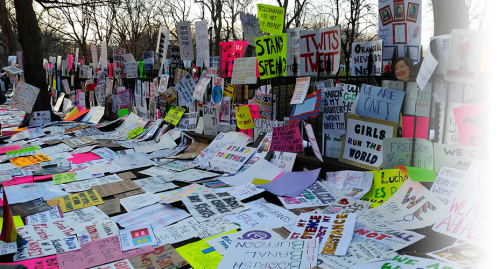The report, prepared jointly by the Centro para la Apertura y el Desarrollo de América Latina (CADAL) and the Artistic Freedom Initiative (AFI), covers Nicaragua’s crackdown on artists and cultural workers. CADAL and AFI focus on the period between 2018, when mass protests against President Daniel Ortega swept Nicaragua, and 2023; the government still resorts to silencing measures, such as prosecution, imprisonment, and denaturalization, against dissenting artists. The report’s Chapter 2 analyzes the laws and policies used to suppress expression, including through the tactics of surveillance, harassment, and disenfranchisement; the report’s legal experts show such measures are incompatible with Nicaragua’s international human rights obligations. In between chapters, CADAL and AFI feature artwork by Nicaraguan cartoonist and illustrator Pedro X. Molina on the themes of censorship, persecution, exile, and resistance.

